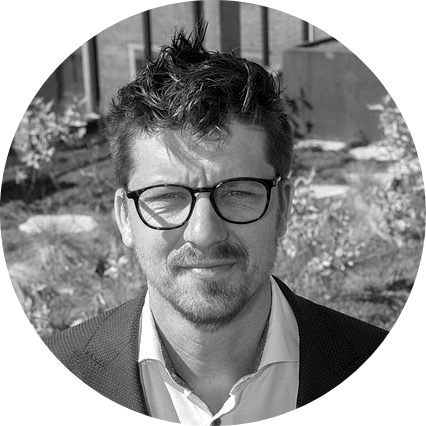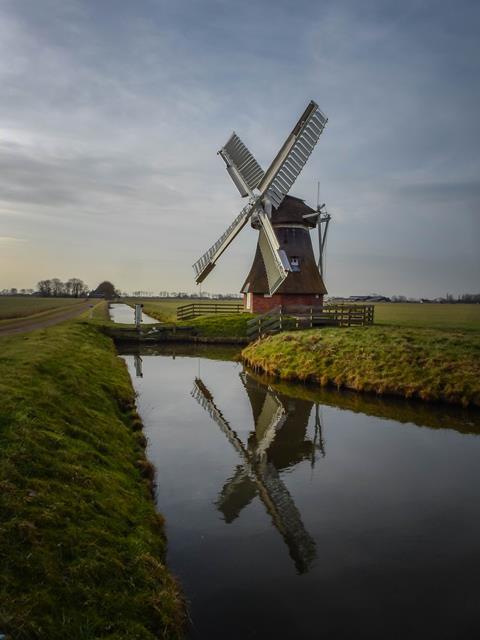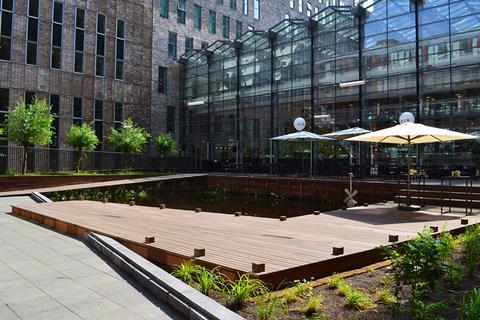With water scarcity set to become one of the most important issues we face, Hollie Tye speaks to Metropolder’s founder, Friso Klapwijk, about the Dutch model of water management and how our roofs can offer a solution

Extreme weather events and long periods of drought pressuring the liveability of cities around the world have made it more important than ever to store and reuse wastewater.
It’s a cause that Metropolder’s founder, Friso Klapwijk, has been advocating since his journey began in 2010: “In a polder, rainwater is a resource, it feeds crops and makes Holland one of the biggest producers of fresh food. In cities, we treat rainwater like a waste system, feeding nothing but our sewers.”
The Netherlands were prone to frequent flooding, from the rivers and the sea in varying degrees and severity. What followed is a long history of reclaiming marshlands and fenland, resulting in some 3,000 polders nationwide.
Man-made structures were built to defend against water, called dikes, with canals and pumps utilised to drain the land and keep it dry. From the 1200s onwards, windmills were adopted to pump excess water off the fertile soil, however, most windmills have since been replaced with electricity and diesel-driven pumps. The adoption of such technologies has created abundantly fertile land within the region.
According to a 2007 study by Calvin College Michigan (USA), about 65% of the county would be underwater at high tide, if it were not for the use of dikes, dunes and pumps. Resulting in the old Dutch adage “While God created the Earth, the Dutch created the Netherlands”.
The Dutch start-up, Metropolder, was a spin-off of a roof garden design and build firm called Dakdokters. Designing for water catchment, the team utilised smart technology and added control elements into their systems. What started as a vision turned into a success story as the city of Amsterdam embraced the concept and provided Metropolder with a water permit.

“We don’t touch the drainage system on the roof. We install a shallow crate unit on top of the roofing system and add a smart control that can open and close to control the water level,” says Klapwijk.
The water is kept on the roof for a short period of time, so as not to cause extra risk of flooding, and offers the benefit of supporting a green roof system, naturally feeding plants with rainwater.
Traditional roof garden systems often have no irrigation system, resulting in clients opting for desert-type plants that can sustain themselves, or needing to ‘top up’ the water system in order to feed plant life. Polder water prevents the need to use drinking water to maintain roof gardens, reducing waste-water and increasing biodiversity at the same time.
The smart technology utilised is made up of a smart weir, with multiple sensors that take constant readings to increase optimisation. It provides real-time access to water availability levels on the roof, helpful for maintenance teams and on a wider scale, helpful for water management systems.
Rainwater can be useful in a city setting, cooling, feeding plants, supplementing groundwater and even replacing drinking water for many applications. “The end game is roofs connected to infiltration and reuse systems and connected throughout a city”, explains Klapwijk.
The water is kept on the roof for a short period of time, so as not to cause extra risk of flooding, and offers the benefit of supporting a green roof system, naturally feeding plants with rainwater.
A physical connection, with multiple adjacent roofs on different levels, offers the opportunity to ‘top up’ green roofs to ensure they’re supported with water collected from roofs that require less. This idea of water sharing is still in the design phase, but the team are working on multiple projects where the overflow of water is being used elsewhere.
Water captured on roofs is far less likely to contain viruses and bacteria than that which overflows from streets. With treatment, it could be used to flush our toilets, or even to shower or supplement our supply of drinking water. “The technology is out there,” says Klapwijk “and our approach to projects is going to enable expansion in that area.”
Water is heavy, so it’s natural to wonder how a roof system can support the extra weight. “The impact is almost zero,” according to Klapwijk. “Every roof is designed for over-capacity, for snow load, we use that during the summer months for rainwater storage. In the wintertime, the system is empty so there’s no effect on the bearing load.”
And what if it starts to leak? “The roof is waterproof or it’s not,” states Klapwijk. “The testing on the roofing system gets more attention but all systems for flat roofs already need to be waterproof, so there’s nothing new there.”
He goes on to add: “If you have permanent water on the roof, you can’t work with cheap materials. You need a tried and tested roofing system” and insurance companies seem to be aware of what systems are safe to use and which ones should be avoided.

The rooftop pond in the WTC Hague is a shining example of Klapwijk’s work in action. The client wanted to extend the building but the local authority wouldn’t allow works to be carried out due to the sewer system not being able to handle the extra load. This kickstarted a conversation with the developer, and with no room in the building to store water and no room in the sewer, a polder roof system became an ideal solution.
Usually, the water is stored below something, whether a solar panel or a roof garden, but at the WTC Hague, the water was the main attraction.
Water scarcity is going to be one of the most important issues we face and it’s clear that we need global solutions. For Klapwijk, it was important not to build something just for the Dutch market. His international ambitions were realised as his company stepped foot onto the global stage, recently being acquired by global water infrastructure solutions provider, Wavin. The move clearly demonstrates the need for global providers to be taking steps to close the water cycle and future-proof our cities.
“Our story about rainwater in the city was way bigger than our solution. Wavin offered us the opportunity to connect our plans for polder roofs to a wider scheme of dealing with water in our cities. That’s when the plan came together,” exclaims Klapwijk.















No comments yet